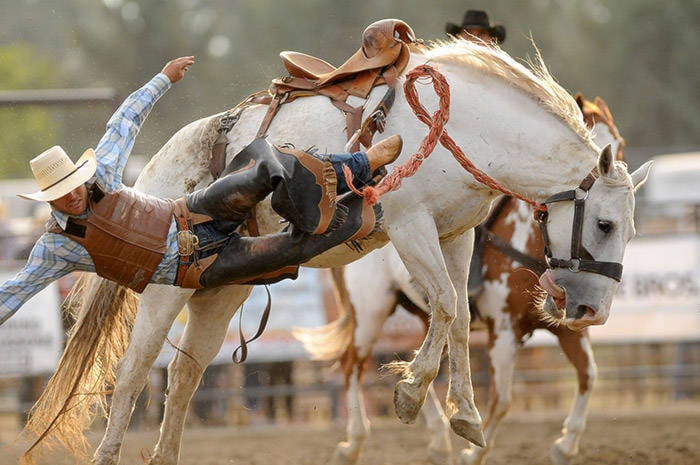I had the tasty honour of being a guest judge for the Black Box category at the Barn Burner BBQ competition on July 21 alongside Mayor Ken Popove, Coun. Jason Lum and Chilliwack MLA John Martin.
The Chilliwack Fair is also coming up this weekend, a popular local agricultural tradition.
And, in case you didn’t know, B.C. is home to 545 dairy producers, and 325 chicken growers, most of whom are in the Fraser Valley.
Farming and food is front and centre here in case it wasn’t visibly, tastily, sometimes audibly and often even olfactorily obvious. This is the breadbasket of British Columbia.
So what’s the point? The four above events and industries — the Barn Burner, the Fair and dairy/poultry farmers — have been the target in recent days, weeks and years of animal rights activists.
The over-simplification often trotted out is that all this is simply a clash between radical urban vegan activists and us peaceful meat-eating rural folks.
But as usual, matters are more complicated.
Many of “us” here in the Fraser Valley are actually urban-raised people, making the move to a beautiful place, if a slightly different lifestyle. The City of Abbotsford’s motto is “City in the Country,” a nickname that increasingly works for Chilliwack, too.
We aren’t big cities, but our urban cores — surrounded by the Agricultural Land Reserve (ALR) — are growing in substantial ways.
Chilliwack is not a small farm community any more, hasn’t been for a long time. To all the old-timers who long for less traffic, fewer high-density neighbourhoods, and who still refer to the municipality as “the district,” you’re not in Kansas anymore.
Malls, commercial and industrial areas are all surrounded by mostly single-family-home suburban neighbourhoods in Chilliwack. There are also more and more townhouses and apartments, all nestled among dairy farms, chicken barns, greenhouses, fields of corn, hay, and vegetables.
We are used to the smell of manure in the Superstore parking lot, and the sight of goats next to suburbia. My kids have a chicken barn next to their elementary school. I commented one drive to school in the spring that the liquid manure being spread that day was particularly stinky. My daughter, born and raised in the Fraser Valley overtly disagreed: “I like the smell!”
My point here is that we might be increasingly seeing a bit of a clash between urban and rural ways of life.
That clash isn’t new. I only arrived in Chilliwack 13 years ago but I remember, more often than now, complaints about manure spreading, the messes on roads and smell. I feel like there is less of that now, maybe the “don’t-complain-about-farming-with-your-mouth-full” comeback has been accepted.
But about the vegan activists: People don’t eat meat for various reasons, environmental for example, but the activist argument we see here is ethical. Animal rights activists targeting dairy and chicken producers, as well as those slated to protest the rodeo at the Chilliwack Fair and those who stood with signs protesting at the Barn Burner BBQ, are opposed to the treatment of animals slated for slaughter.
One might wonder why vegan activists who essentially think meat is murder and dairy is rape would bother focusing on electric prods at a rodeo or on treating chickens ethically on the way to slaughter. It’s like complaining about a thief smashing the window of your car, even though he also stole your car.
But I suspect the activist approach here is, to use an the old proverb (ironically used here): How do you eat an elephant? One bite at a time.
The activist community knows that stopping meat consumption is impossible, so they start by trying to get producers to simply follow the laws in place and treat animals as ethically as possible as they are milked or before they are killed.
Most urban folks, however, are simply not used to the reality of industrial farming, or the similarity to how animals are treated on ranches to rodeos, much less the reality of slaughterhouses. Many urban meat eaters have a cognitive dissonance regarding protein consumption. The source of that protein is forgotten as they consume burgers, ribs and chicken wings.
There is an argument to be made that those of “us” who eat meat but do not hunt or haven’t seen inside a slaughterhouse should be forced to at least take a much closer look at the reality of meat production.
Boneless, skinless chicken breasts were once attached to live birds. You all knew that, right?
@PeeJayAitch
paul.henderson@theprogress.com
Like us on Facebook and follow us on Twitter.
